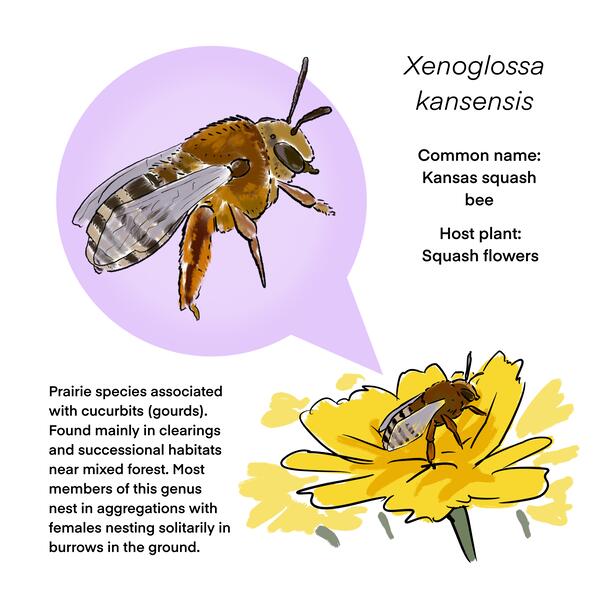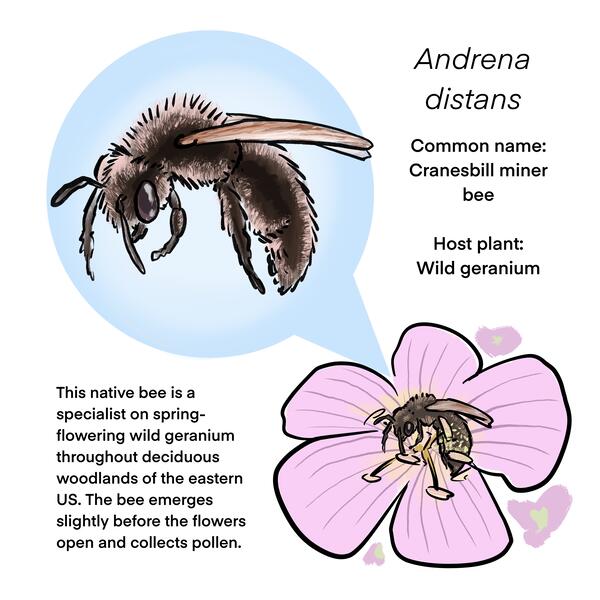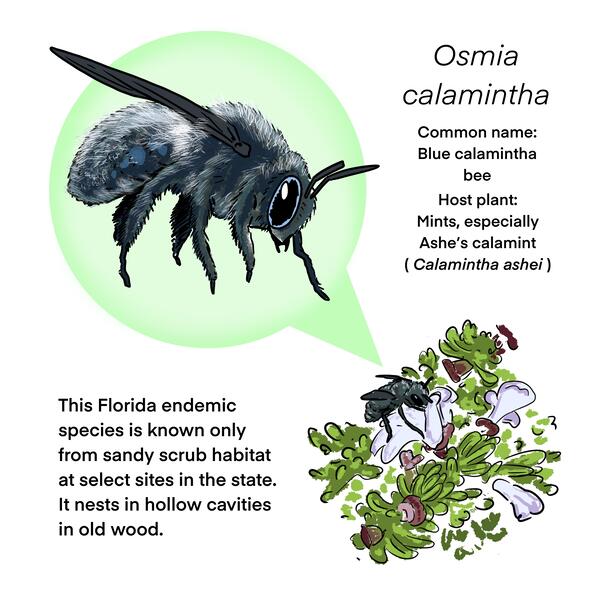Climate Illustrations
Need a helpful illustration to explain climate change? Wondering how to explain concepts like climate refugia and range shifts? These illustrations explore tricky concepts surrounding climate change and the world around us. Also check us out on Instagram @USGS_Climate for our latest and greatest graphics!
These are public domain images that are free to download and use without attribution.
Ecosystem Services
Healthy ecosystems benefit us in countless ways! They provide us with food, energy, building materials, medicine, clean water, and clean air. They support biodiversity, regulate soil erosion, control flooding, and store carbon. Ecosystems also provide us with opportunities for recreation and can have cultural and spiritual value to many people. The benefits that people obtain from ecosystems are known as “ecosystem services”. Explore examples of the services provided by different ecosystems below.

River ecosystems contain riparian vegetation that trap sediment and filter debris for higher water quality. They also have riparian zones that reduce floods by slowing water flow.

Urban green spaces with trees provide shade and reduce residual heat from asphalt. Spaces with gardens offer food for communities and space for pollinators.

Mangroves absorb and store CO2, provide habitats for animals and fish, and their vast root systems prevent erosion and shield coasts from strong winds and waves.

Forest ecosystems capture and store carbon, support game animals and edible plants, and provide sources of food and recreation.

Coastal ecosystems shield local communities from strong coastal winds and waves and supply fish for industry, sport, and even dinner.

Coastal wetlands store carbon, reduce flood damage, and serve as important habitats for fish, birds and shellfish.

While these vast open spaces might seem uniform, they're actually home to diverse plant and animal species, and they provide a whole host of ecosystem services!

Coral reefs provide ample opportunities for recreational activities and fishing and add important cultural value to coastal communities.

Drylands are critical for ranching and grazing, maintaining biodiversity, supplying minerals and energy, and exchanging large amounts of carbon with the atmosphere.

Prairie Pothole wetlands support migratory birds, store carbon, slow runoff after extreme precipitation events, and filter out pollutants.

Arctic ecosystems are at the forefront of climate
change and many of the ecosystem services they
provide are rapidly threatened or changing.
Climate Change & Invasive Species
Climate change is impacting invasive species in many ways. Changes in climate are creating new pathways for invasive species to be introduced, such as new shipping routes that open up as sea ice retreats. Warmer temperatures can allow existing invasive species to expand their range into habitat that was once too cool for them. Similarly, impacts to native species and people may change if changing climate conditions affect invasive species abundance. Climate change may also make existing invasive species control tools less effective. Explore some of these impacts below.

Invasives like the emerald ash borer shift their ranges into new ecosystems with warming.

Invasives like the brown trout become more competitive under new climate conditions.

Wildfires help promote the spread of some invasive plants.

Treatments are less effective under new climate change conditions, allowing sea lamprey to thrive.

Changing climate conditions are creating new pathways that enable some invasive species to spread.

After using all of their energy to migrate and spawn, Pacific salmon start to decay. Bacteria and fungal infections begin to rot the living fish. Warming waters accelerate these infections, impacting their lifespans and ability to reproduce.

Warming temperatures and late snowfalls allow winter tick numbers to grow and overwhelm already stressed moose populations. The moose scratch at these ticks, exposing white hair and giving them a mangy and "ghostly" look.

Rising sea levels inundate coastal forests across the Northeast and Southeast coasts, drowning tree roots in salty water. The seawater kills sensitive trees, leaving behind a "ghost forest" of dead and dying timber.

A phenomenon in Arctic boreal forests, zombie fires ignite in warm months, lay dormant in the soil over winter, then resurrect when the weather warms!

Paleoecologists, use fossils to learn how the Earth's climate has changed over time. This information can help us understand modern-day trends in climate.

Ghost fauna are animals that can no longer live in their homes once water covers the land, for example when sea levels rise.

If you're a mythical snake-like sea monster, having a living shoreline to relax on is crucial! Living shorelines protect coastlines from storms and flooding and provide important habitat for creatures known and unknown.

Terrible omen, or friendly pollinator? Either way, planting native flowers and plants will help you stay on Mothman's good side! Native plants can attract all manner of winged pollinators to your yard.

Fires are actually an important part of many ecosystems' regeneration cycles, including the Pine Barrens. Properly managed prescribed fires can help these cycles by burning underbrush and letting new native plants sprout.

Old growth forests have two important functions—they absorb and store more carbon than they release, reducing carbon in the atmosphere, and they provide Bigfoot habitat.

After a hard day's work creepin' the swamps and backroads of the Everglades, you just want to sit back and relax into a properly working wetland that's filtering water, storing carbon, reducing flooding, and providing important habitat.

Climate change is exacerbating dry conditions, making water shortages more severe. And we don’t want any dehydrated chupacabras out there. Who knows where they might start looking for a drink...

Invasive grasses are taking over sagebrush steppes, destroying prime habitats, and disrupting Jackalope season.

Rising temperatures mean less snow to camouflage the shy Yeti.

Krakens are having to search more for tasty fishing boats as warming waters shift where fish populations live.

More frequent and severe storms are flooding rivers in the Midwest, washing the Michigan Dogman out of hiding early

Download this 11x17 inch poster of our Climate Cryptids collection! PNG
Check back for more cryptids soon!
Climate Concepts
Explaining climate change can be difficult, especially when it comes to how climate change affects ecosystems and wildlife. These illustrations help break down the terms and concepts we use to describe climate change impacts, so everyone can understand how our ecosystems are changing.

Nature-based solutions are a way to solve problems by using nature as tool. They can bring the outdoors to you to make your communities safer, healthier, and greener. It’s a win-win! USGS researches the effectiveness of nature-based solutions.

Climate Change Refugia: (noun) Areas buffered from climate change that enable the continued persistence of fish and wildlife. As climate change reduces or alters species' habitats, climate change refugia help plants and animals hold on.

The Climate Research and Development Program studies the changes that occur in ecosystems, determining how, why, where, and what causes or caused ecosystems to change. They then use this knowledge to predict future changes.

Blue carbon refers to carbon captured in coastal and ocean ecosystems. In addition to providing habitat for many different plant and animal species, protecting coastal communities and infrastructure from storms and waves, and providing recreational opportunities, coastal ecosystems like marshes, mangrove forests, and seagrass beds also store large amounts of carbon in their soils.

Drylands are landscapes that have a scarcity of water, including deserts such as the Sonoran Desert with its iconic Saguaro cacti and the sagebrush steppes of the American West. Covering roughly 40% of Earth’s land surface, drylands are our planet’s largest terrestrial biome - one in every three people lives in a dryland.
Climate & Pollinators
Native pollinators support our communities, farms, and national food supply, and are an important member of your local ecosystem. Climate change may impact pollinators in many ways, especially threatened species like the monarch butterfly. Explore the illustrations below to learn how their life cycle might change, and what you can do to help these species in your own backyard!

Climate change can impact each stage of a monarch's life cycle by creating wetter conditions, increasing temperatures, and shifting the timing and length of seasons.

Planting butterfly-friendly plants in your yard, reducing harmful chemical use in your lawns and gardens, and “leaving the leaves” in the fall can help butterfly populations in your area!

Roughly 32% of the ~5570 bee species native to the US are pollen specialists, making them an important part of ecosystems.



Paleoclimate
Paleoclimatology is the study of Earth's climate during the entire history of the Earth. Paleoclimate research uses geologic and biologic evidence (climate proxies) preserved in sediments, rocks, tree rings, corals, ice sheets and other climate archives to reconstruct past climate in terrestrial and aquatic environments around the world. Paleoclimate reconstructions provide evidence for the baseline level of climate and environmental variability before humans began using instruments to measure different aspects of climate and weather.
You can learn more about paleoclimate research here: Paleoclimate Research | U.S. Geological Survey (usgs.gov)




Hotheaded and honestly a bit dry, DROUGHT is totally an Aries. And with that competitive spirit, of course there's more than one type of drought - 5 in fact!

Stubborn and down-to-earth, PHENOLOGY takes its time, even as seasons change. But when pressures like climate change force PHENOLOGY to switch it up, they can become a little unpredictable.

Speaking of unpredictable, climate VARIABILITY is constantly shifting yet versatile. Their mood changes as drastically as climate-impacted weather patterns.

BEACH EROSION holds nothing back, and they’ll erode your patience like they do the shore. But don't let their big waves of feelings overshadow their nurturing side!

This is a no-brainer. Fiery, passionate, and dramatic, WILDFIRE couldn't be more of a Leo. While a little fire can be good, climate totally worsens their destructive habits.

Always on the move. Independent to a fault. INVASIVE SPECIES are workaholics who are constantly spreading out into other's personal space. Climate change just fuels their fire.

Sure, UNCERTAINTY may seem indecisive, but by looking at the full range of possible climate conditions their style is always on point.

Things aren't simple with FLOODING & STORMS. Always piggybacking off SEA LEVEL RISE & BEACH EROSION’s worst traits, they just have to take it up a notch. Thriving on chaos makes them powerful; altering rivers, swallowing beaches, and causing mayhem.

True to their sign, EXTREME HEAT is overly generous with the temperature, and climate change helps to feed their fiery spirit. They should never be left alone near the thermostat.

You know that overachiever who just moves the goal post for everyone else? That’s RANGE SHIFTS. Ambition and perseverance can help species survive a changing climate, but they can step on toes in the process—and they don’t mind knocking other people off the mountain as they climb it.

Progressive is definitely one word for ICE MELT, especially under climate change. They might start slow, but when they get going, everyone notices.

Going too far is SEA LEVEL RISE’s favorite activity. Despite their knack for pushing boundaries, they’re also intuitive; they know just where to put a little extra water to make it hurt the most.

